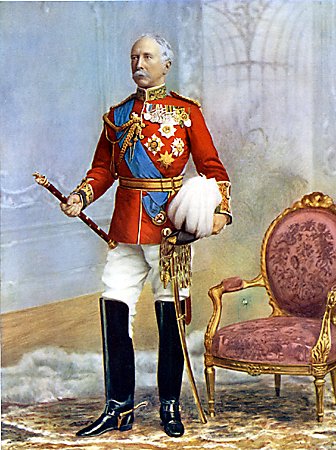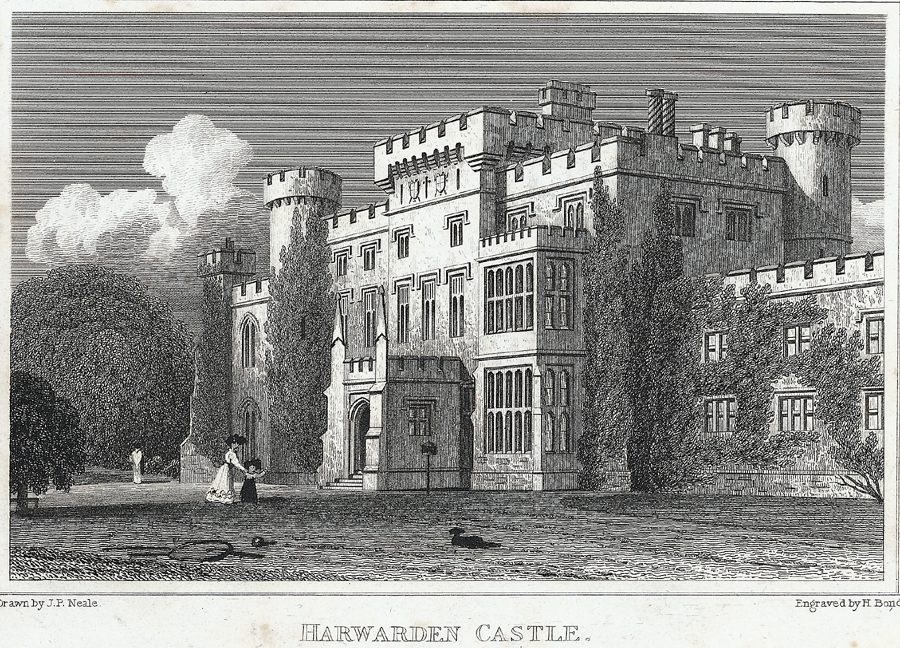|
Mary Redmond
Mary Redmond (1863 – 16 January 1930) was an Ireland, Irish sculptor born in Nenagh, County Tipperary, in 1863, and raised in Ardclough, County Kildare, where her father went to work in the limestone quarries. Early life At school in Ardclough, she modelled the soft clay from a sinkhole near her home into clay figures. At the age of nine she was sent to live in Dublin to attend primary school. While there, she worked in the studio of Thomas Farrell where she created her first work "a hand on a cushion". She was accepted into the Dublin Metropolitan School of Art where she studied drawing and painting, though she was drawn to working with clay. Career Her most famous work, a statue of Theobald Mathew (temperence reformer), Father Theobald Mathew in O'Connell Street, Dublin, was inaugurated in 1893 (or 1891 ) (8 February). She won a contest to create the sculpture, an achievement for a woman artist at the time. According to Nora J Murray’s article in ''Capuchin Annual'' (193 ... [...More Info...] [...Related Items...] OR: [Wikipedia] [Google] [Baidu] |
Nenagh
Nenagh ( ; , or simply 'the Fair') is the county town of County Tipperary in Republic of Ireland, Ireland. Nenagh used to be a market town, and the site of the East Munster Ormond Fair. Nenagh was the county town of the former county of North Tipperary. It became the second-largest urban centre in the amalgamated county, with a population of 9,895 in 2022. The town is in a Civil parishes in Ireland, civil parish of the same name. Geography Nenagh, the largest town in northern County Tipperary, lies to the west of the Nenagh River, which empties into Lough Derg (Shannon), Lough Derg at Dromineer, 9 km to the north-west, a centre for sailing and other watersport, water sports. The Silvermine Mountains, Silvermine Mountain range lies to the south of the town, with the highest peak being Keeper Hill () at 694 m. The Silvermines have been intermittently mined for silver and base metals for over seven hundred years. Traces of 19th century mine workings remain. The ar ... [...More Info...] [...Related Items...] OR: [Wikipedia] [Google] [Baidu] |
William Ewart Gladstone
William Ewart Gladstone ( ; 29 December 1809 – 19 May 1898) was a British politican, starting as Conservative MP for Newark and later becoming the leader of the Liberal Party (UK), Liberal Party. In a career lasting over 60 years, he was Prime Minister of the United Kingdom for 12 years, spread over four non-consecutive terms (the most of any British prime minister) beginning in 1868 and ending in 1894. He also was Chancellor of the Exchequer four times, for over 12 years. He was a Member of Parliament (United Kingdom), Member of Parliament (MP) for 60 years, from 1832 to 1845 and from 1847 to 1895; during that time he represented a total of five Constituencies of the Parliament of the United Kingdom, constituencies. Gladstone was born in Liverpool to Scottish people, Scottish parents. He first entered the House of Commons of the United Kingdom, House of Commons in 1832, beginning his political career as a High Tory, a grouping that became the Conservative Party (UK), ... [...More Info...] [...Related Items...] OR: [Wikipedia] [Google] [Baidu] |
19th-century Irish Women Artists
The 19th century began on 1 January 1801 (represented by the Roman numerals MDCCCI), and ended on 31 December 1900 (MCM). It was the 9th century of the 2nd millennium. It was characterized by vast social upheaval. Slavery was abolished in much of Europe and the Americas. The First Industrial Revolution, though it began in the late 18th century, expanded beyond its British homeland for the first time during the 19th century, particularly remaking the economies and societies of the Low Countries, France, the Rhineland, Northern Italy, and the Northeastern United States. A few decades later, the Second Industrial Revolution led to ever more massive urbanization and much higher levels of productivity, profit, and prosperity, a pattern that continued into the 20th century. The Catholic Church, in response to the growing influence and power of modernism, secularism and materialism, formed the First Vatican Council in the late 19th century to deal with such problems and confirm ce ... [...More Info...] [...Related Items...] OR: [Wikipedia] [Google] [Baidu] |
Artists From County Kildare
An artist is a person engaged in an activity related to creating art, practicing the arts, or demonstrating the work of art. The most common usage (in both everyday speech and academic discourse) refers to a practitioner in the visual arts only. However, the term is also often used in the entertainment business to refer to actors, musicians, singers, dancers and other performers, in which they are known as ''Artiste'' instead. ''Artiste'' (French) is a variant used in English in this context, but this use has become rare. The use of the term "artist" to describe writers is valid, but less common, and mostly restricted to contexts such as critics' reviews; "author" is generally used instead. Dictionary definitions The ''Oxford English Dictionary'' defines the older, broader meanings of the word "artist": * A learned person or Master of Arts * One who pursues a practical science, traditionally medicine, astrology, alchemy, chemistry * A follower of a pursuit in which skill co ... [...More Info...] [...Related Items...] OR: [Wikipedia] [Google] [Baidu] |
People From Nenagh
The term "the people" refers to the public or common mass of people of a polity. As such it is a concept of human rights law, international law as well as constitutional law, particularly used for claims of popular sovereignty. In contrast, a people is any plurality of persons considered as a whole. Used in politics and law, the term "a people" refers to the collective or community of an ethnic group or nation. Concepts Legal Chapter One, Article One of the Charter of the United Nations states that "peoples" have the right to self-determination. Though the mere status as peoples and the right to self-determination, as for example in the case of Indigenous peoples (''peoples'', as in all groups of indigenous people, not merely all indigenous persons as in ''indigenous people''), does not automatically provide for independent sovereignty and therefore secession. Indeed, judge Ivor Jennings identified the inherent problems in the right of "peoples" to self-determination, as i ... [...More Info...] [...Related Items...] OR: [Wikipedia] [Google] [Baidu] |
1930 Deaths
Events January * January 15 – The Moon moves into its nearest point to Earth, called perigee, at the same time as its fullest phase of the Lunar Cycle. This is the closest moon distance at in recent history, and the next one will be on January 1, 2257, at . * January 26 – The Indian National Congress declares this date as Independence Day, or as the day for Purna Swaraj (Complete Independence). * January 28 – The first patent for a field-effect transistor is granted in the United States, to Julius Edgar Lilienfeld. * January 30 – Pavel Molchanov launches a radiosonde from Pavlovsk, Saint Petersburg, Slutsk in the Soviet Union. February * February 10 – The Việt Nam Quốc Dân Đảng launch the Yên Bái mutiny in the hope of ending French Indochina, French colonial rule in Vietnam. * February 18 – While studying photographs taken in January, Clyde Tombaugh confirms the existence of Pluto, a celestial body considered a planet until redefined as a dwarf planet ... [...More Info...] [...Related Items...] OR: [Wikipedia] [Google] [Baidu] |
1863 Births
Events January * January 1 – Abraham Lincoln signs the Emancipation Proclamation during the third year of the American Civil War, making the abolition of slavery in the Confederate States of America an official war goal. The signing proclaimed the freedom of 3.1 million of the nation's four million slaves and immediately frees 50,000 of them, with the rest freed as the Union Army advances. This event marks the start of America's Reconstruction era, Reconstruction Era. * January 2 – Master Lucius Tar Paint Company (''Teerfarbenfabrik Meister Lucius''), predecessor of Hoechst AG, Hoechst, as a worldwide Chemical, chemical manufacturing brand, founded in a suburb of Frankfurt am Main, Germany. * January 4 – Founding date of the New Apostolic Church, a Christian and chiliastic church, in a schism with the Catholic Apostolic Church in Hamburg, Germany. * January 7 – In the Cantons of Switzerland, Swiss canton of Ticino, the village of Bedretto is ... [...More Info...] [...Related Items...] OR: [Wikipedia] [Google] [Baidu] |
Garnet Wolseley, 1st Viscount Wolseley
Field Marshal Garnet Joseph Wolseley, 1st Viscount Wolseley (4 June 183325 March 1913) was an Anglo-Irish officer in the British Army. He became one of the most influential British generals after a series of victories in Canada, West Africa and Egypt, followed by a central role in modernizing the British Army in promoting efficiency. Wolseley is considered to be one of the most prominent and decorated war heroes of the British Empire during the era of New Imperialism. He served in Burma, the Crimean War, the Indian Mutiny, China, Canada and widely throughout Africa—including his Ashanti campaign (1873–1874) and the Nile Expedition against Mahdist Sudan in 1884–85. Wolseley served as Commander-in-Chief of the Forces from 1895 to 1900. His reputation for efficiency led to the late 19th century English phrase "everything's all Sir Garnet", meaning, "All is in order." Early life and education Lord Wolseley was born into a prominent Anglo-Irish family in Dublin, the eldest s ... [...More Info...] [...Related Items...] OR: [Wikipedia] [Google] [Baidu] |
Edmund Dwyer Gray (Irish Politician)
Edmund William Dwyer Gray (29 December 1845 – 27 March 1888) was an Irish newspaper proprietor, politician and MP in the House of Commons of the United Kingdom of Great Britain and Ireland. He was also Lord Mayor and later High Sheriff of Dublin CityBoylan, John (1998) ''Dictionary of Irish Biography'' p.153, 3rd.ed. and became a strong supporter of Charles Stewart Parnell. Early life and family Gray was born on 29 December 1845 in Dublin, the second son of Sir John Gray and his wife, Anna Dwyer. After receiving his education, he joined his father in managing the ''Freeman's Journal'', the oldest nationalist newspaper in Ireland. When his father died in 1875, Gray took over proprietorship of the ''Journal'', and his family's other newspaper properties such as the ''Belfast Morning News'' and the Dublin '' Evening Telegraph''.G. B. Smith'Gray, Edmund Dwyer (1845–1888)’, Rev. Alan O'Day, ''Oxford Dictionary of National Biography'', Oxford University Press, 2004; onlin ... [...More Info...] [...Related Items...] OR: [Wikipedia] [Google] [Baidu] |
Hawarden Castle (18th Century)
(New) Hawarden Castle () is a house in Hawarden, Flintshire, Wales. It was the estate of the former British prime minister William Ewart Gladstone, having previously belonged to the family of his wife, Catherine Glynne. Built in the mid-18th century, it was later enlarged and externally remodelled in the Gothic taste. History The core of the present house is formed by a mansion built in 1752–57 for Sir John Glynne, 6th baronet, to the designs of Samuel Turner the elder of Whitchurch, Shropshire. It replaced the 16th-century Broadlane Hall, the seat of the Ravenscroft family, which stood some way to the south. Glynne had acquired the estate through marriage. The new house was of brick with stone dressings. The main block was three storeys high, and seven bays wide, with a projecting three-bay central pediment. Two flanking side pavilions were planned but may not have been completed. In the early 19th century, Sir Stephen Richard Glynne, 8th Baronet, inherited the estate. ... [...More Info...] [...Related Items...] OR: [Wikipedia] [Google] [Baidu] |








